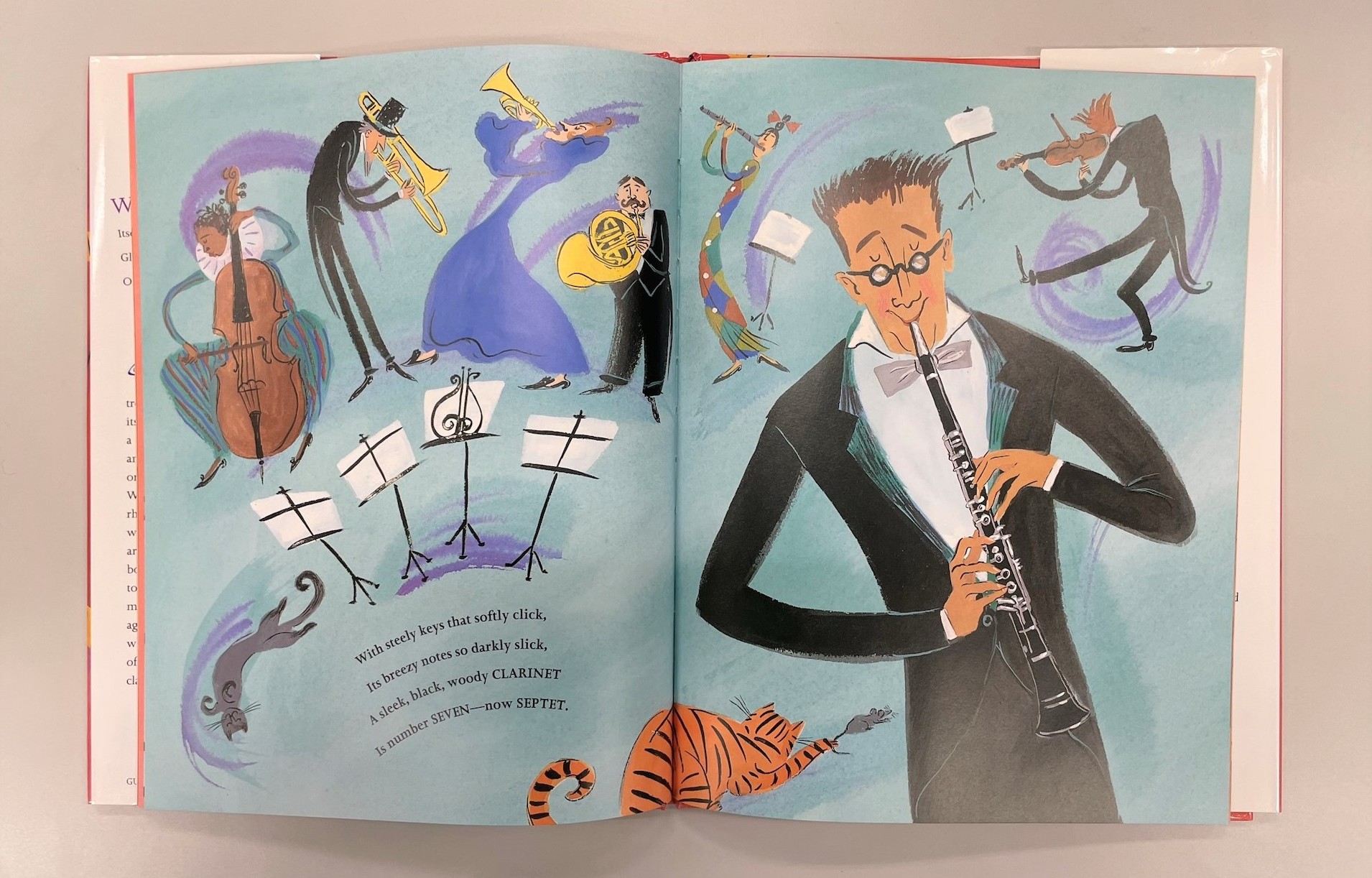
Read the Beat: Music in Children’s Literature
Since the advent of children’s literature as a genre, there has been a mutually enriching relationship between music and books for young people. Books are more than simply containers to be filled with useful information, but fascinating forms in their own right. Incorporating music in various ways expands this form and the experiential possibilities surrounding it.
Multimodal books, which engage multiple methods of interaction, reflect the ways that children come to understand the world. Music adds an auditory component and enhances the kinesthetic and verbal aspects of a book. More specifically, introducing music at a young age develops musical skills and concepts like pitch, melody, rhythm, tempo, and dynamics.
From picture books to pop-ups, children’s literature in the Rare Book Collections incorporates music in various ways.

Sheet Music: Sing and Play Along
A common strategy for incorporating music into children’s books is the inclusion of sheet music as a part of the text. In the late nineteenth and early twentieth centuries, nursery rhymes and folktales set to music proliferated. These examples (pictured above and below) display sheet music alongside illustrations, the original rhymes, and even hand symbols that young children can imitate in time.
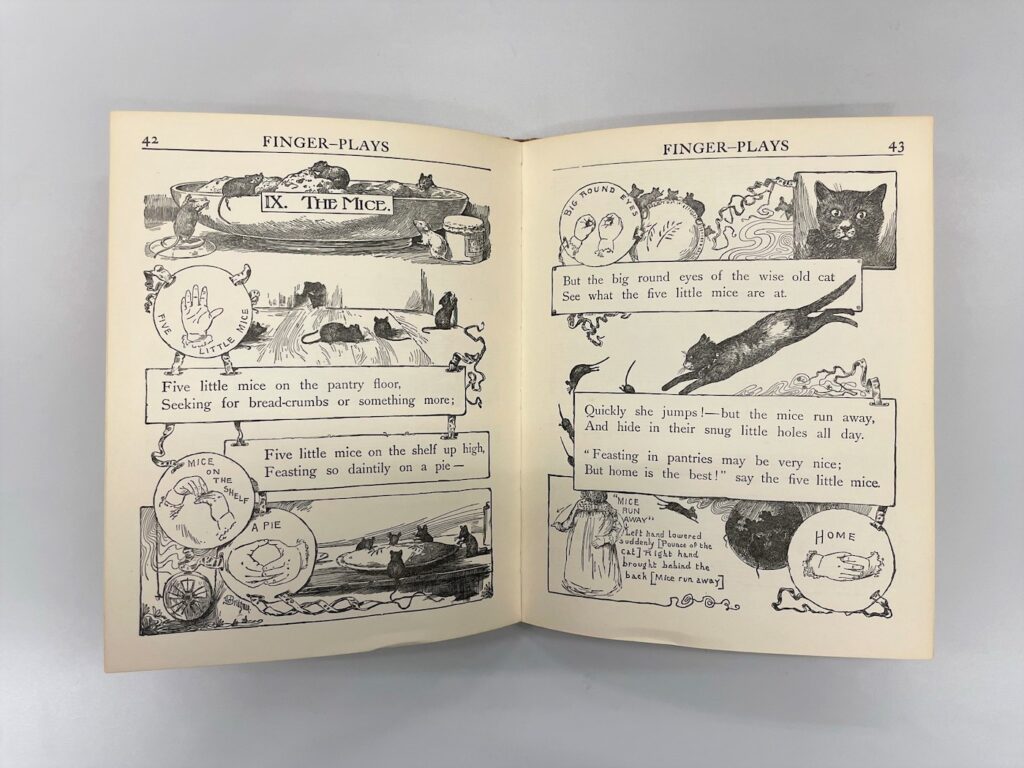

Musical Text: Sound it Out
A less direct way to engage with music is through the musicality of text. This can take place through rhyme, alliteration, onomatopoeia, and scat (a type of jazz singing), to name just a few tactics. The picture book Zin! Zin! Zin! A Violin includes alliteration with words that start with the “s” sound.
FLUTE, that sends our soul a-shiver;
FLUTE, that slender, silver sliver.
Other books like Who Bop? take a distinct jazz slant by mixing words with nonsense syllables:
HIP DE-DIP and HOP HOP HOP,
we like to bo-bip and do-wop the bop.
Such a stylistic text must be read aloud for the fullest effect. This emphasizes rhythmic patterns, as certain syllables take up more time than others. Underneath the rhythm is the steady beat of the music, which the listener sways or taps their foot to. While pitch and melody are not present, these books can also help children practice dynamics and mimic instrument sounds.

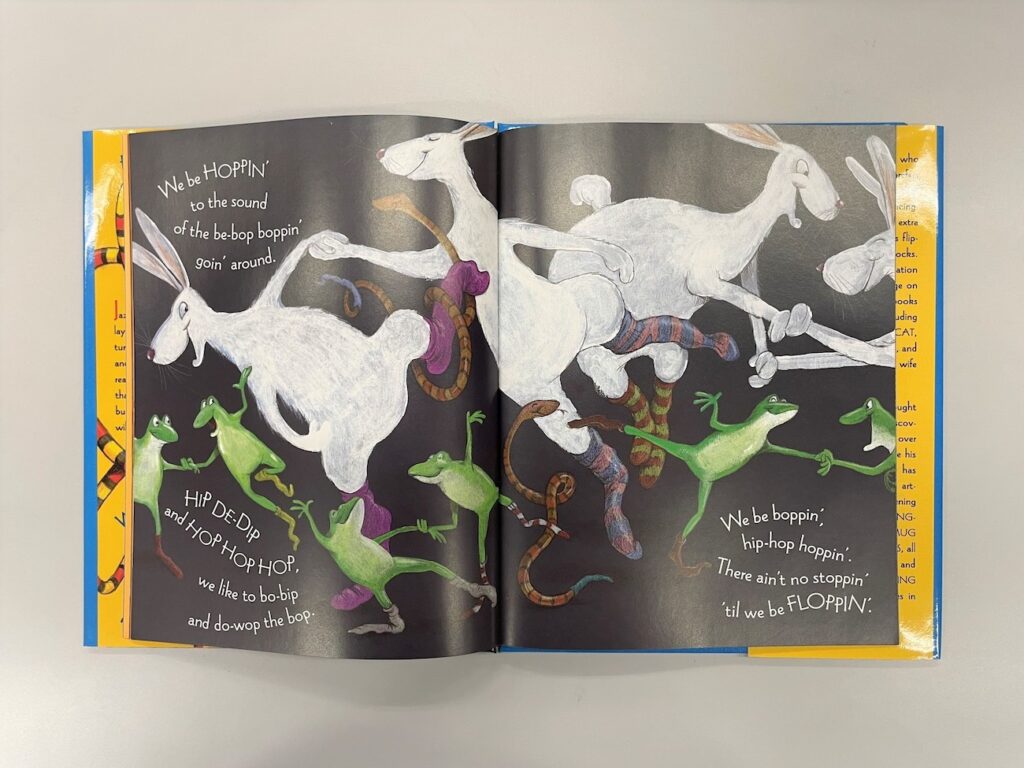
Moving Parts: See and Hear the Music
Another approach is to experiment with the form of the book itself by introducing pop-ups and audio components. This is often used to give a familiar song (nursery rhymes, holiday songs) physical form. Three-dimensional illustrations entice the reader to engage with the song in a more tactile way, searching for hidden details and moving parts in time with the music (see The Wheels on the Bus). Silver Bells: A Musical Pop-up Book (see below) even includes a button that plays the song out of a battery-operated speaker. Eloise Wilkin and Demi’s Rock-a-bye, Baby is almost more instrument than book; a music box encased in cardboard makes up the bulk of the object while the book is pasted on top. As a genre, these types of music books are the most toy-like and largely marketed as gifts.
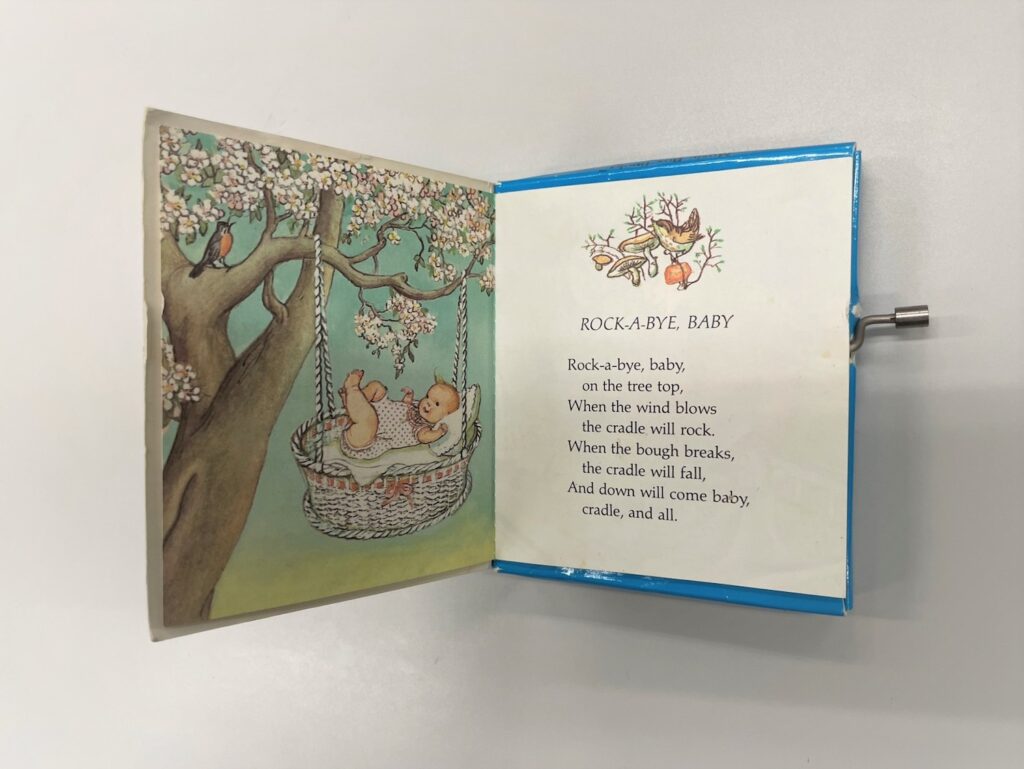
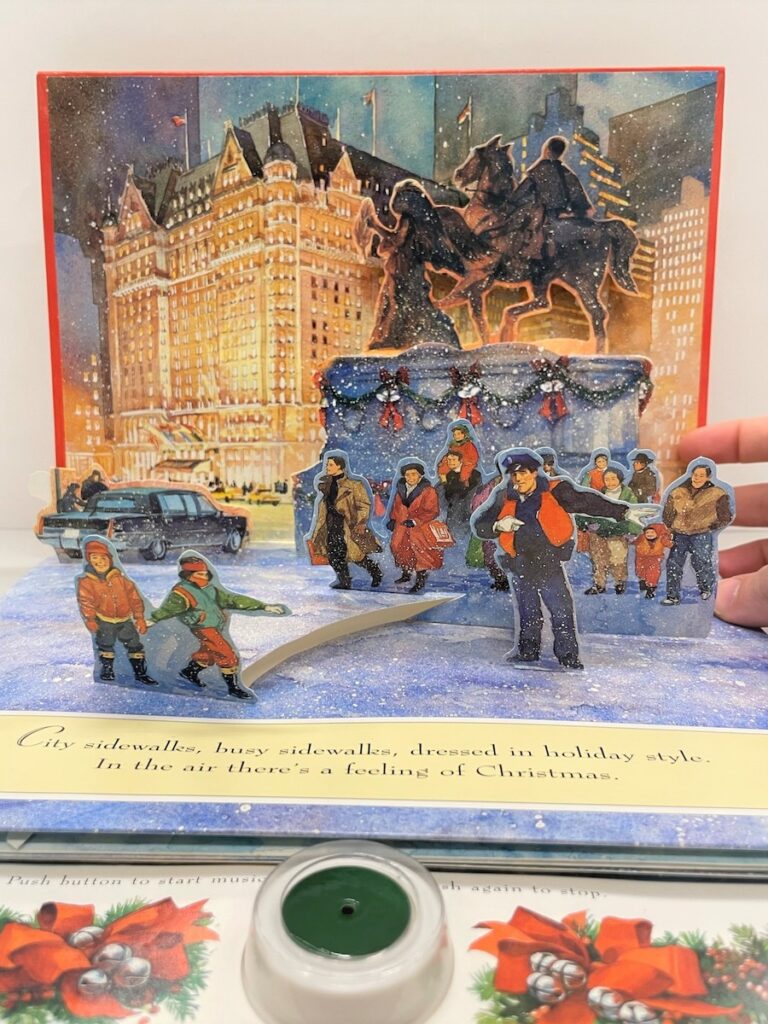
In a world where so much children’s media is screen-based, musical children’s books have become uniquely multimodal in order to stand out on the shelf. Engaging with a physical book may help readers understand music in a deeper, more embodied way—from listening and clapping to singing along.
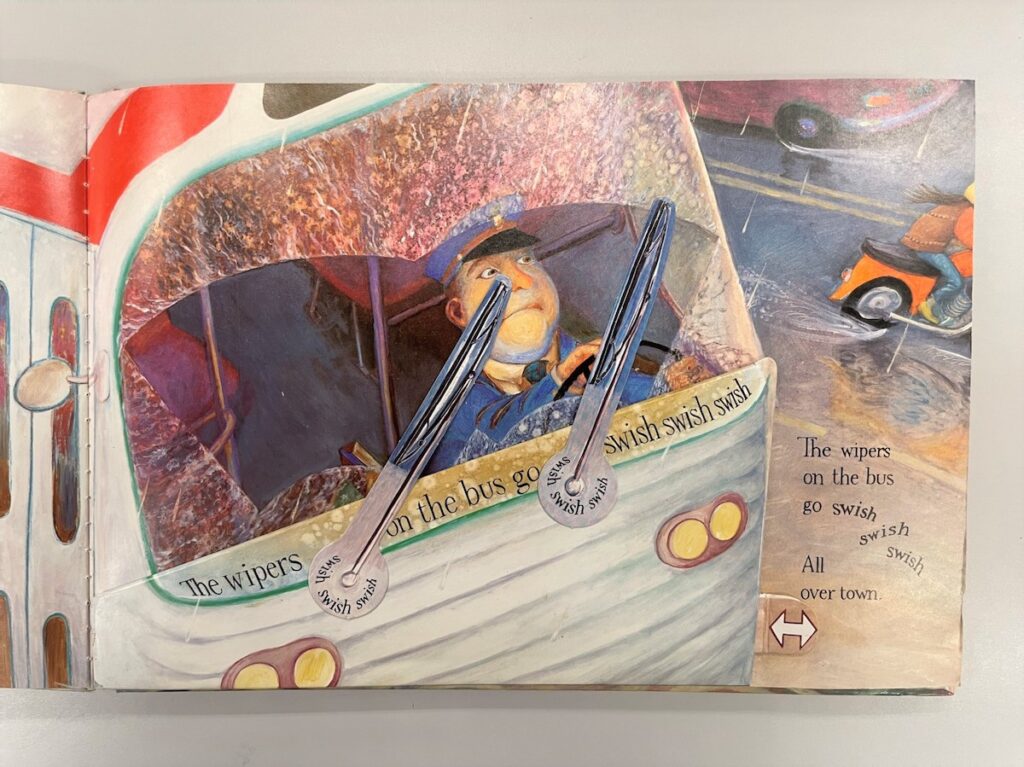
To take a closer look at these and related materials, set up an appointment at Special Collections by emailing spec@wumail.wustl.edu or calling (314) 935-5495.
Bernadette Lamb is an MFA in Illustration and Visual Culture candidate at the Sam Fox School of Design and Visual Arts.
